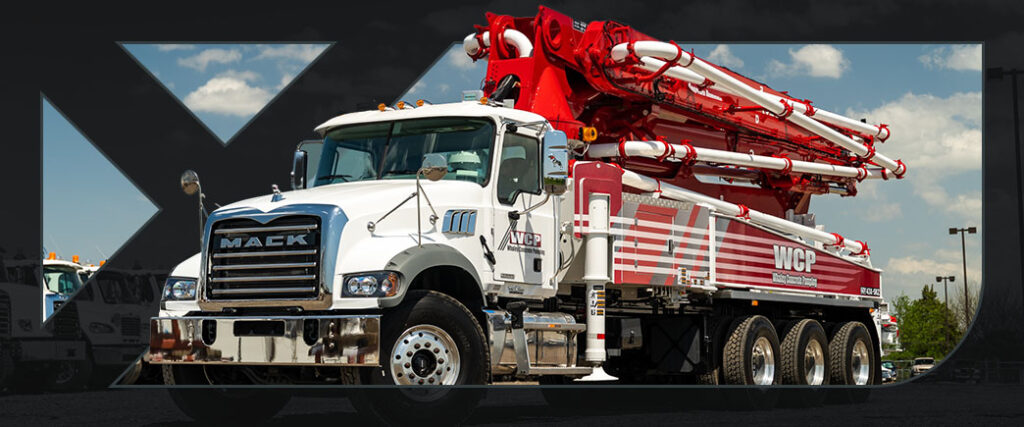Concrete pump trucks are essential in modern construction, enabling efficient and effective concrete pouring over long distances and complex elevations. These specialized vehicles play a critical role in ensuring that the concrete is delivered precisely where it’s needed, and their functionality is heavily dependent on the various parts that make up the system. To help you understand how concrete pump trucks work and how to maintain them for maximum efficiency, this guide will dive into the key components of a concrete pump truck, focusing on concrete pump parts and the often-overlooked concrete pump rubber hose.
1. The Concrete Pump Boom
The boom of a concrete pump truck is one of the most recognizable parts. This long, extendable arm can stretch to considerable lengths, making it easy to position the pump head at various angles and elevations. The boom is typically constructed with a combination of lightweight, high-strength materials like steel or aluminum to ensure both strength and flexibility. The functionality of the boom plays a significant role in maximizing the reach of the pump truck, allowing it to access hard-to-reach places at construction sites.
Maintenance Tip: Regular inspection of the boom for cracks, wear, and tear is essential. Keeping it in good condition ensures that the pump’s reach and lifting capabilities are maintained, preventing downtime.
2. Concrete Pump Hopper
The hopper is the initial receiving point for the concrete. This part holds the mixture and allows it to move into the pump system via a powerful suction mechanism. The hopper is designed to handle high-pressure volumes of concrete and must be robust to avoid cracking or damage.
Maintenance Tip: Keeping the hopper clean and free of concrete build-up is crucial for preventing clogs and ensuring smooth operation. Proper washing after every job can extend the hopper’s lifespan.
3. Concrete Pump Delivery Line
The delivery line is the pipe system through which the concrete travels from the hopper to the final discharge point. These pipes are typically made of steel or aluminum and come in various sizes depending on the pump’s capacity. They are designed to withstand the high pressure at which the concrete is delivered, allowing the pump to push large volumes of concrete over long distances.
Maintenance Tip: Regularly inspect the delivery lines for any cracks, leaks, or blockages. Ensure the pipes are securely connected to avoid accidents and prevent the buildup of hardened concrete that can impede flow.
4. Concrete Pump Rubber Hose
Arguably one of the most vital components of the concrete pump system, the concrete pump rubber hose is responsible for the final delivery of concrete at the discharge end. This flexible, durable hose is designed to withstand the high-pressure flow of concrete and the physical wear and tear associated with repetitive use.
The rubber hose connects to the end of the delivery pipe and directs the flow of concrete into the desired location. Its flexibility is crucial for allowing movement and maneuvering around obstacles on the job site. It is also essential for ensuring smooth, uninterrupted concrete flow, especially in jobs where precise delivery is required.
Maintenance Tip: Regular inspection of the rubber hose for wear, cuts, and leaks is essential. Because the hose experiences extreme pressure and friction, it’s important to replace it promptly if any issues are identified. Additionally, keeping the hose clean and free of hardened concrete can prevent blockages and reduce wear.
5. Hydraulic System
The hydraulic system is responsible for the power and movement of the pump truck’s various components, including the boom and the piston. This system uses pressurized fluid to generate force, allowing the pump to push concrete at high pressures and for the boom to extend and move.
Maintenance Tip: Routine checks of the hydraulic fluid levels and condition are necessary to ensure smooth operation. Replace the hydraulic fluid as per the manufacturer’s recommendations to avoid overheating and damage to the pump system.
6. Concrete Pump Piston
The piston is a crucial part of the concrete pump mechanism. It pushes concrete from the hopper into the delivery line. The piston operates within the cylinder and uses the pressure generated by the hydraulic system to move the concrete.
Maintenance Tip: Inspect the piston regularly for signs of wear. A damaged piston can cause concrete flow issues and may lead to costly repairs. Lubrication is key to extending its service life.
7. Valves and S-Wash System
The valves control the direction and pressure of the concrete as it moves through the system. They are essential for controlling the flow of material, especially in complex jobs where precise delivery is required. The S-wash system helps clean out the pump and prevent blockages by flushing out any remaining concrete.
Maintenance Tip: Ensure that the valves are regularly cleaned and checked for proper operation. The S-wash system should also be maintained to keep the pump clean and ready for the next job.
8. Concrete Pump Truck Engine
The engine powers all the functions of the pump truck, from the hydraulic system to the movement of the boom. A well-maintained engine ensures the truck’s longevity and efficiency, making it a vital part of the overall system.
Maintenance Tip: Perform regular engine checks and maintenance as recommended by the manufacturer. Keeping the engine in good condition helps ensure smooth operation of the pump system.
Conclusion
Maintaining the various parts of a concrete pump truck is crucial for ensuring high performance, efficiency, and longevity. Regular inspection and upkeep of concrete pump parts, especially the concrete pump rubber hose, are essential for smooth operation and preventing unexpected breakdowns. By keeping these key components in top shape, you can extend the life of the equipment, reduce repair costs, and enhance the overall performance of your concrete pumping operations. With proper maintenance, your concrete pump truck will continue to serve as an essential tool for years to come.




























